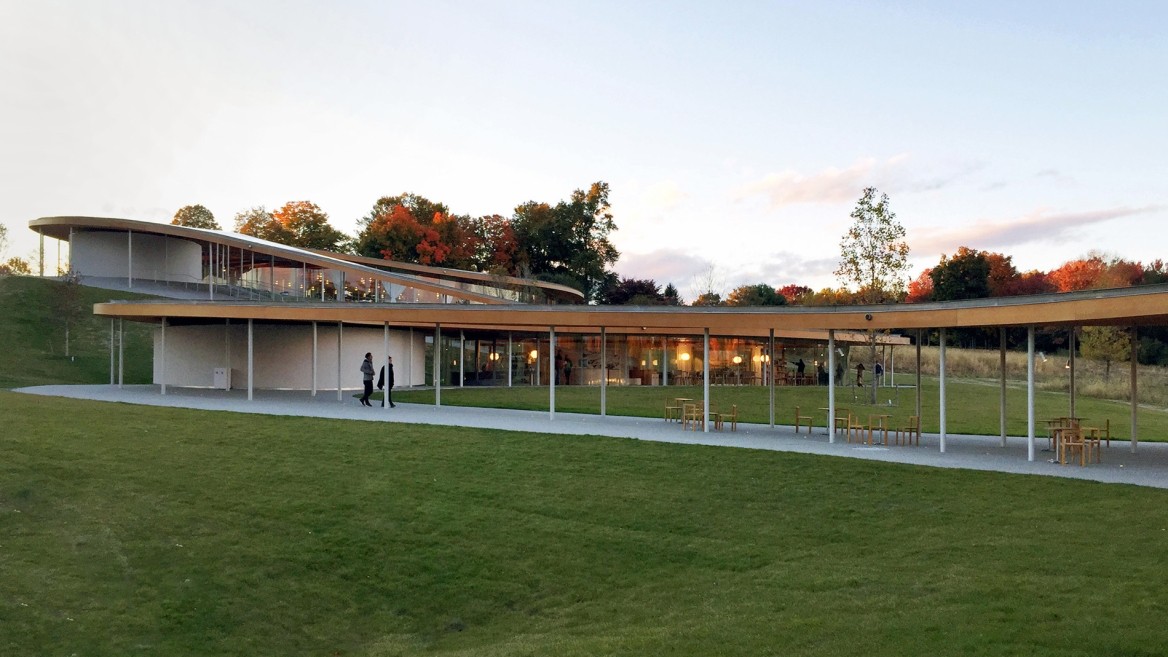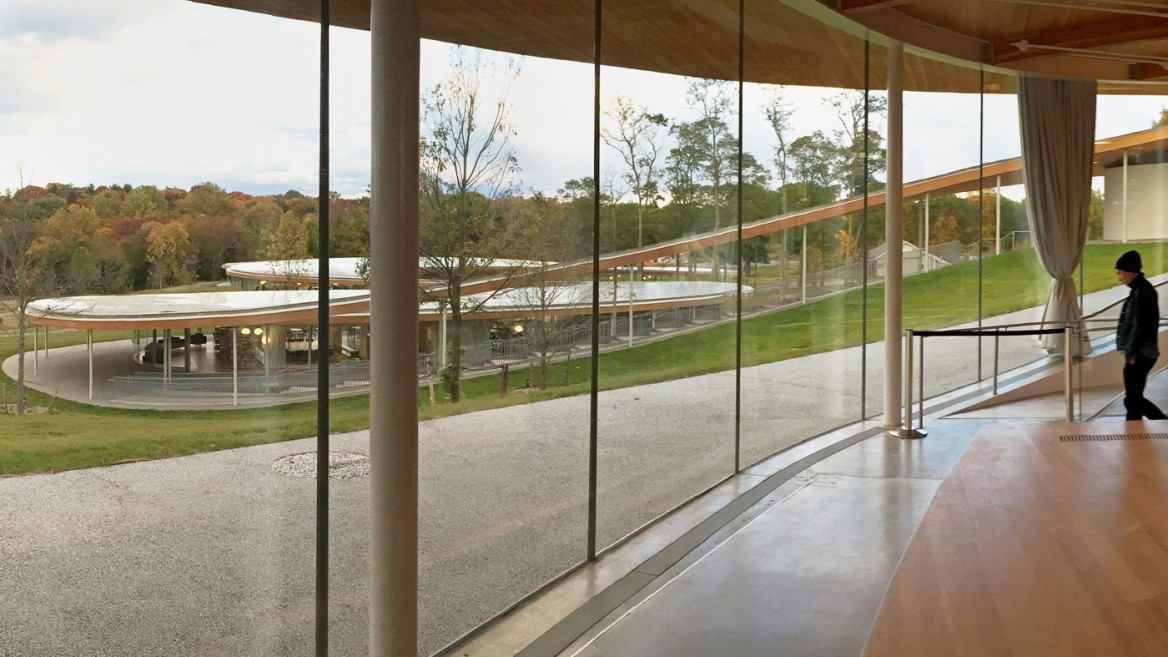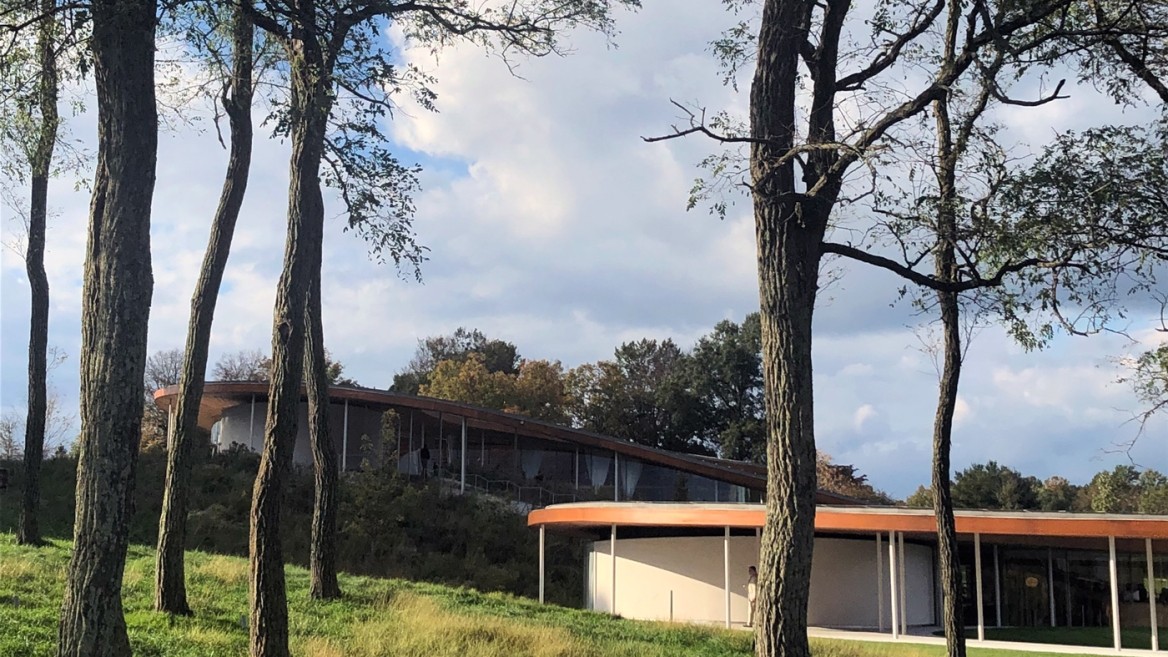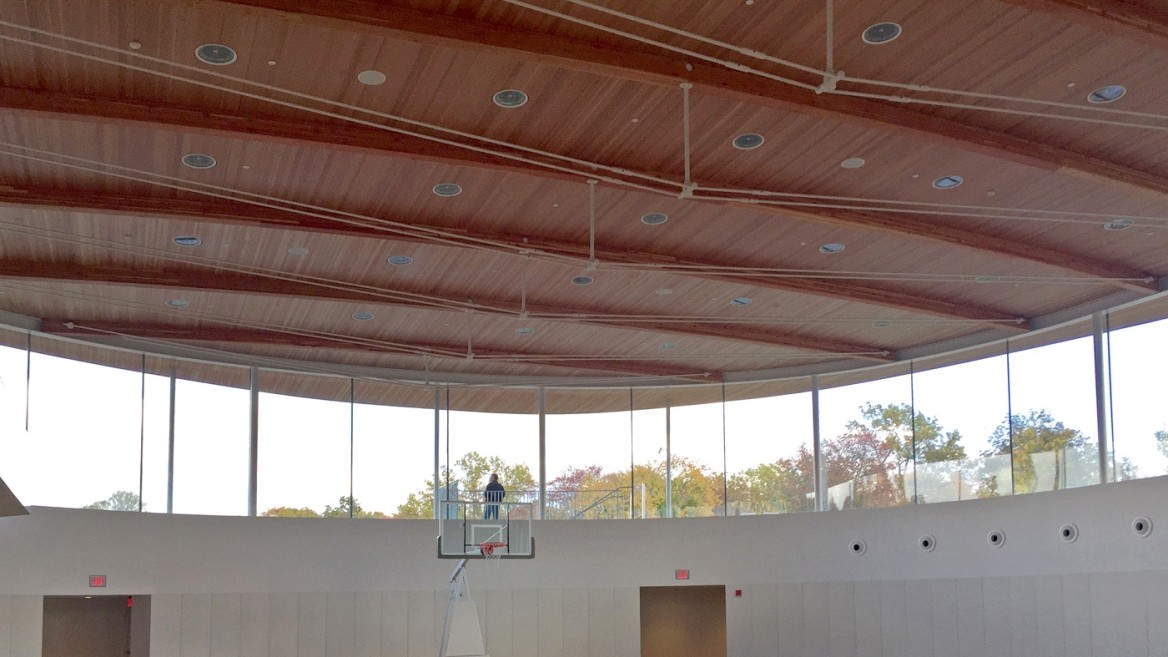Grace Farms River Building

TYLin provided structural engineering and design services for the Grace Farms Foundation’s new River Building in New Canaan, Connecticut.
Designed by architect SANAA with Handel Architects, the River Building blends into its natural surroundings, minimally impacting views across a site that was once gently sloping farmland. The sustainable, LEED Silver-certified project is a complex of glass-walled buildings that include a sanctuary, a library, a dining hall, a classroom pavilion, and a gymnasium, all connected by a curving, sloped, winding roof.
Our engineers worked closely with structural engineer Mutsuro Sasaki, a frequent SANAA collaborator, during the earliest conceptual design stages. The two firms developed a structural scheme that celebrated the architect’s understated approach while meeting the project’s unique challenges and taking advantage of local design and construction opportunities.
The structural design of the River Building comprises three primary elements: close to 200 “flagpole” steel pipe columns; continuous double-curved steel beams at the perimeter of each building; and long-span king post roof trusses that allow for column-free interiors in long-span spaces such as the gymnasium and sanctuary. Glulam girders support the smaller pavilions.
A series of wide flange beams bent in a compound curve were fabricated through a digital data transfer between TYLin and the fabricator. The curved segments, with each arch about 22 feet long, were spliced together in the field, typically over the pipe columns, creating a continuous curved beam that runs along the top of the curved glass facade.
To address the specific challenges of the various spaces, a single glulam type and size was modified throughout the structure. This included adding steel to create trusses over long spans and additional outrigger framing at the longer overhangs.
Project Highlights:
- A defining characteristic of the River Building is the absence of any paired columns, moment frames, or x-braced frames.
- The steel pipe columns are each fixed at their base and provide an overall lateral system that does not require crossing beams to achieve stability.
- Each truss is a combination of a glulam arch without any splice, one or two king posts, and two tension rods for the bottom chord.
- Since the infill framing consisted primarily of standard sawn lumber, or laminated wood beams for longer spans, local carpenters built much of the roof structure.
Services
- Structural engineering



